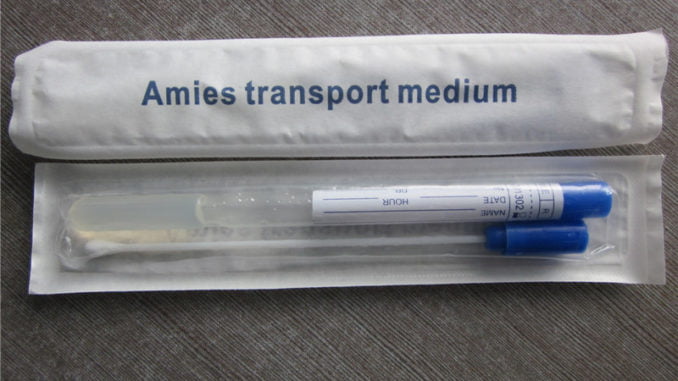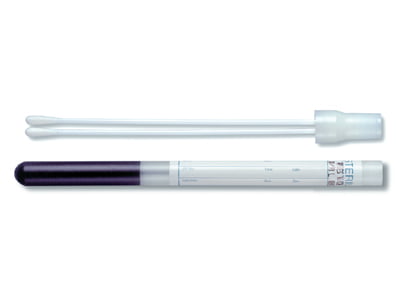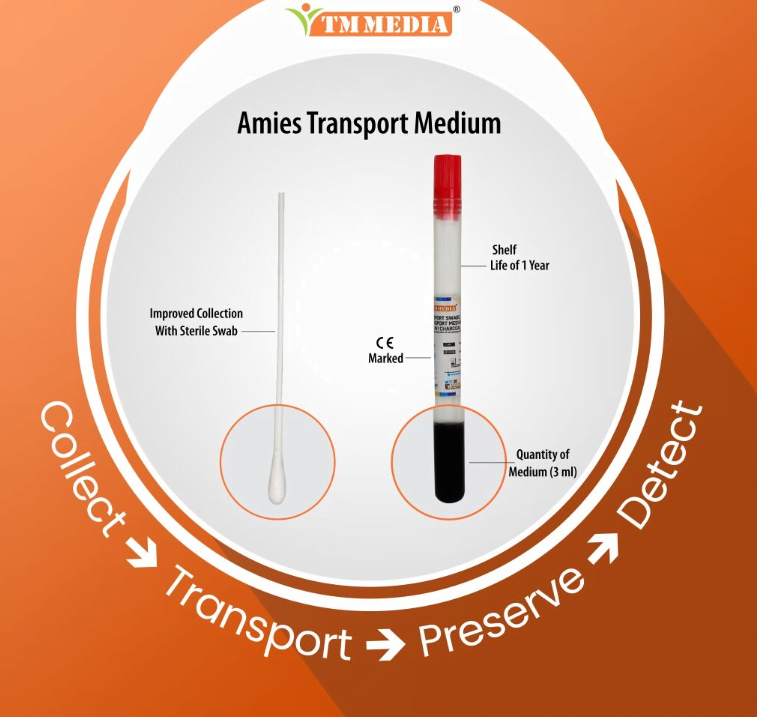What is Amies Transport Medium?

It is Clinical specimens, especially those harboring bacteria, are collected and transported using Amies transport medium, a specialized microbiological transport medium. Start and Amies created it in the middle of the 20th century.

Table of Contents
Its Composition
It is a type of specialized microbiological transport medium that is used to transfer bacteria from a collecting location to a lab for examination and growth while preserving their viability. A typical Amies transport medium composition consists of the following elements, though there may be minor variances based on particular formulations or manufacturer preferences:
Solution of Buffered Salt
A buffered salt solution is included in the medium to keep the sample’s pH within the ideal range for bacterial viability. Phosphate buffers are a common type of buffering agent that aid in pH stabilization.
Charcoal
It frequently contains charcoal to absorb harmful compounds and metabolic byproducts that may prevent the growth of bacteria. Activated charcoal preserves the viability of bacteria while in transit and counteracts the impacts of harmful substances.
Gelatin or agar
Agar or gelatin may be used as a hardening agent in some Amies transport medium formulations. This offers a semi-solid substrate for the bacteria to live in and aids in preventing sample leakage during transportation.
Salts of calcium and magnesium
The development and metabolism of bacteria depend on these ions. Salts of calcium and magnesium are frequently added to the medium to sustain bacterial viability and supply nutrients while the medium is being transported.
Reducing Agents
In order to produce an anaerobic environment within the medium, certain formulations could include reducing agents such sodium thioglycolate. Anaerobic microorganisms are better preserved in transport thanks to this.
Water
The different ingredients are dissolved and a liquid medium is produced by using water as a solvent.
Depending on the manufacturer and intended usage of the medium, these components’ precise ratios may change. Amies transport medium is frequently used in clinical specimen collection and transportation, including swabs obtained from wounds, throats, nasal passages, and genital areas.
Principle
It works on the basis that it can preserve the viability of microorganisms, especially bacteria, while they are being transported from the site of collection to the laboratory for examination. The design and functioning are based on several fundamental principles:
Preserving Viability
It’s main goal is to keep the microorganisms found in clinical specimens alive.
pH Buffering
Amies transport medium normally comprises salt solutions that have been buffered in order to keep the sample’s pH within a range that is ideal for the survival of bacteria.
Absorption of Inhibitory compounds
Toxic compounds and metabolic byproducts that may prevent bacterial growth are absorbed by adding activated charcoal to the Amies transport medium.
Moisture Retention
The specimen won’t dry out because Amies transport medium is made to hold onto moisture.
Preparation
Amies transport medium is made by first dissolving the necessary amounts of sodium chloride, potassium chloride, calcium chloride, and magnesium chloride in distilled water to generate a buffered salt solution. Sodium thioglycolate is added to this solution in order to maintain an anaerobic environment in the medium by functioning as a reducing agent.
Sodium phosphate buffer is dissolved in distilled water to create a phosphate buffer solution separately. After that, the two solutions are mixed to create the medium’s liquid foundation. Activated charcoal is added to absorb potentially inhibiting chemicals, and agar or gelatin can be added as a hardening agent if desired. After adjusting the medium’s pH as needed, the finished combination is autoclaved to achieve sterilization.
The medium is poured into sterile containers and correctly labelled following sterilization. The Amies transport medium that has been developed is appropriate for gathering and moving clinical specimens while maintaining the viability of microorganisms for later examination in the lab.
Result

The successful preservation of microbial viability in clinical specimens throughout transportation to the laboratory is the outcome of employing Amies transport medium. This guarantees the availability of viable microorganisms for investigation and culture, assisting in the precise diagnosis and management of infectious disorders.
Uses
Amies transport medium is used in clinical settings to collect and transfer different kinds of clinical specimens, such as nasal passages, wounds, and other body locations swabs.
It keeps the bacteria in these specimens viable while they are being transported to the lab for examination. The composition of the medium, which contains reducing and buffering agents, aids in maintaining microbial viability and avoiding contamination.
Clinical specimens in Amies transport medium can be promptly injected onto culture media upon arrival at the laboratory, which will help with the identification and isolation of harmful bacteria.
Moreover, adding activated charcoal facilitates the absorption of drugs that block, maintaining the integrity of the microbial population for precise infectious disease detection.
Frequently Asked Questions(FAQ)
What is Amies Transport Medium?
Amies Transport Medium is Clinical specimens, especially those harboring bacteria, are collected and transported using Amies transport medium, a specialized microbiological transport medium. Stuart and Amies created it in the middle of the 20th century.
What is the Result of Amies Transport Medium?
The successful preservation of microbial viability in clinical specimens throughout transportation to the laboratory is the outcome of employing Amies transport medium. This guarantees the availability of viable microorganisms for investigation and culture, assisting in the precise diagnosis and management of infectious disorders.
What are the uses of Amies Transport Medium?
Amies transport medium is used in clinical settings to collect and transfer different kinds of clinical specimens, such as nasal passages, wounds, and other body locations swabs. It keeps the bacteria in these specimens viable while they are being transported to the lab for examination. The composition of the medium, which contains reducing and buffering agents, aids in maintaining microbial viability and avoiding contamination.
Related Articles




